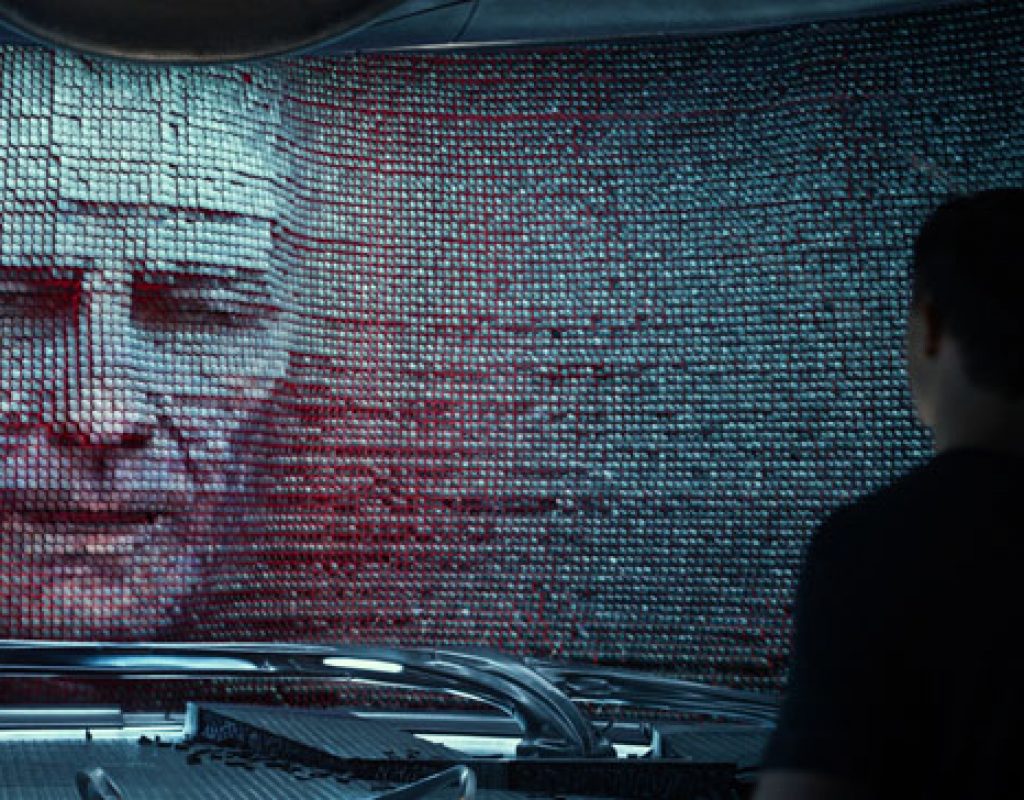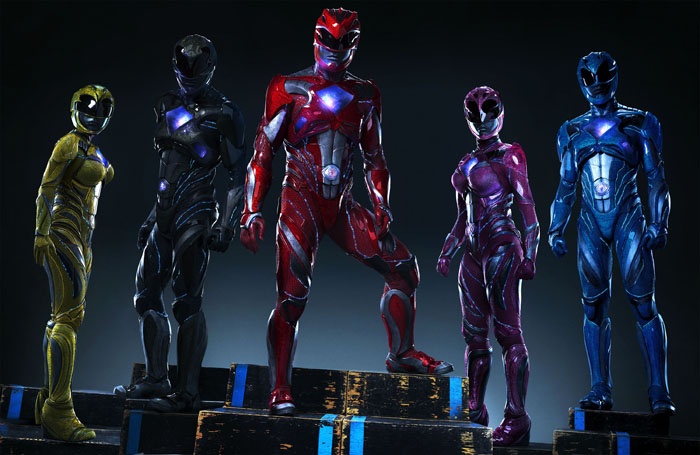 Art of the Cut talks to the two editors behind the re-imagined Power Rangers. Veteran editor Dody Dorn, ACE has an Oscar nomination for Best Editing for Christopher Nolan’s Memento. She has edited numerous films for several top editors including Nolan, Ridley Scott, Baz Luhrmann and David Ayer. Her filmography includes films like Fury, Australia, Kingdom of Heaven, Matchstick Men, Insomnia and Treasure Island. Martin Bernfeld has edited films like Paranormal Activity: The Ghost Dimension and Project Almanac.
Art of the Cut talks to the two editors behind the re-imagined Power Rangers. Veteran editor Dody Dorn, ACE has an Oscar nomination for Best Editing for Christopher Nolan’s Memento. She has edited numerous films for several top editors including Nolan, Ridley Scott, Baz Luhrmann and David Ayer. Her filmography includes films like Fury, Australia, Kingdom of Heaven, Matchstick Men, Insomnia and Treasure Island. Martin Bernfeld has edited films like Paranormal Activity: The Ghost Dimension and Project Almanac.
HULLFISH: What was the schedule?
DORN: We started shooting February 29th, last year.
HULLFISH: How long did principal photography go?
BERNFELD: I’d say 65 days. It was mid-May when they wrapped up, but there were two units most of the time. Main unit was shooting the action with the actors. Then second unit would go into the set to clean up by getting all the plates for VFX. The entire third act was shot on location by second unit. They used two small towns that were merged into one. They had an advanced pre-vis to work from for getting the plates. The drama was filled in with the Zord cockpit material shot on a sound stage with practical cockpits and all the Rangers for the last week of production.
HULLFISH: You guys were getting a ton of dailies if there were two units going on at the same time. How important was it to you to keep up to camera, Dody?
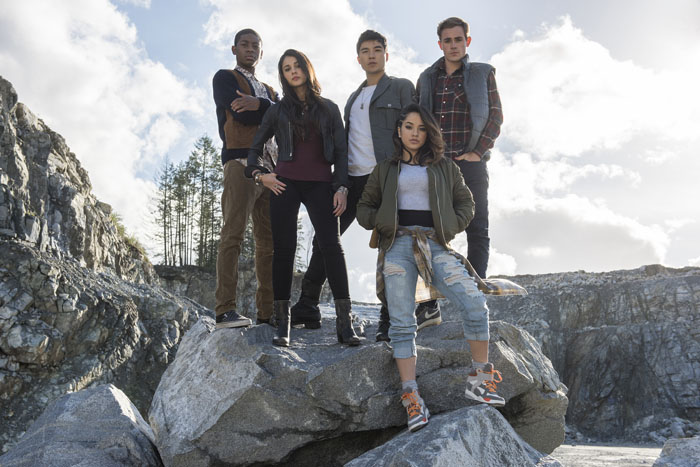
DORN: It was very important because there were a lot of things where the main and second units were working hand-in-glove, and also we were getting those obligatory phone calls from the line producer–Can we wrap this set? The director, Dean Israelite is very exacting with performance so he often wanted to see scenes before wrapping locations. In fact, in one specific case, they had to do a rebuild to go back for something…even though we had said, “Hold on!”
HULLFISH: Do you feel your approach to editing changes when you’re trying to keep up with dailies and then when you don’t have that pressure anymore? Do you approach the material differently?
BERNFELD: It sort of does because you have to put together a quick version of the scene in order to go through all of the dailies, but that’s the beauty of having two editors because you can divide and conquer. We could watch all of the dailies, and put together a scene for Dean to watch as quickly as possible, and also assess whether or not we needed additional shots, and if we were happy with what we got.
HULLFISH: Do you find that when you’re keeping up with dailies are you truly able to watch all of the dailies? Or do you feel like, “Hey it’s for a quick assembly and I just need to make sure I get this cut,” so you go to straight to circled takes? I know a lot of people can’t even start a scene without seeing all of every take.
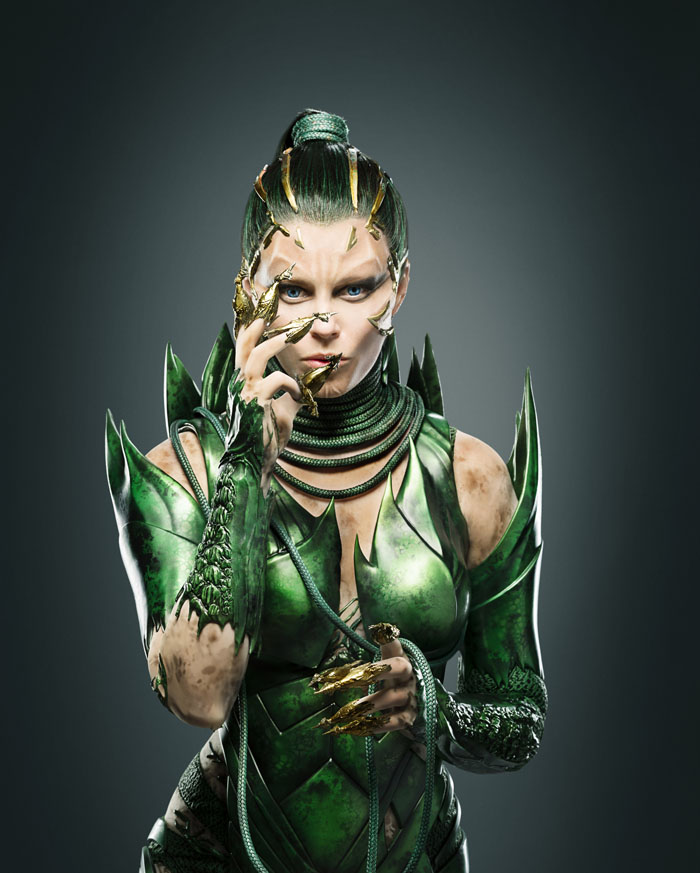 BERNFELD: We were very diligent. We tried to watch all of the dailies and the majority of the time we did watch them all, but there were certain scenes that we had to come back to after the fact. They ended up shooting so much material that it was impossible to watch all of the dailies and cut a scene within one day. So there were definitely cases, but we tried as much as we could to watch everything.
BERNFELD: We were very diligent. We tried to watch all of the dailies and the majority of the time we did watch them all, but there were certain scenes that we had to come back to after the fact. They ended up shooting so much material that it was impossible to watch all of the dailies and cut a scene within one day. So there were definitely cases, but we tried as much as we could to watch everything.
HULLFISH: People have different ways of watching dailies. You might think that it’s a standard procedure, but it’s not. What’s your approach and what are the advantages of that process?
DORN: I watch dailies starting from take one, drop locators while I’m watching, and sometimes I take notes. I like to see how the actor’s performance evolves over the course of the day. The actor comes in with a point-of-view as to how they see the scene, and whatever the backstory is that they have in their head, and their approach is sometimes different from what the director had in mind. Naturally, the performance can change after they’ve gotten direction and it may work out that the natural quality of a performance diminishes in the later takes. Sometimes a director gets to where they want to after a few takes, and then they push further and try lots of other strands and other ways of playing the scene. They’ll drop out dialogue, or do restarts just to get one line a certain way, or feed the actor alt lines. For all these reasons, I find watching from the beginning to be the best. If there’s a rush for other reasons, like needing to wrap a set or an actor, I’ll go straight to circled takes, cut the scene quickly, see how it flows and make sure nothing crucial is missing. I’ve read interviews with editors who start viewing in reverse. They go from the last take and keep going backward until they get to a take they like. I think that’s an interesting approach. Maybe I’ll try it next time.
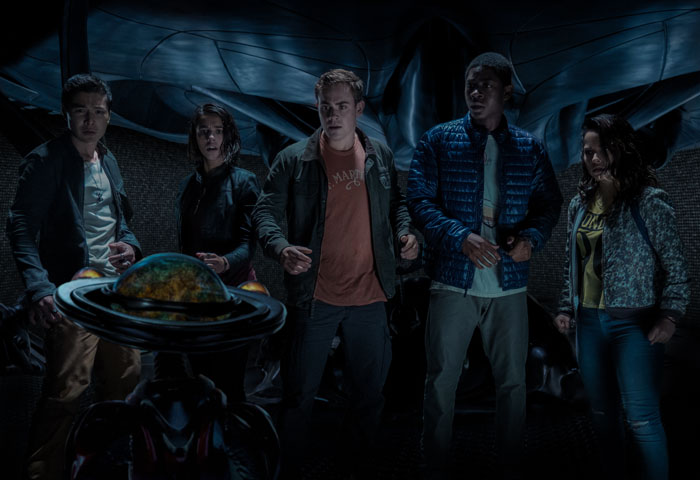
HULLFISH: You were talking about the way that the actors respond to direction, and somebody mentioned that sometimes two actors in a scene respond differently. One actor’s best take is the last one, and the other actor’s best take in the same scene is the first one.
DORN: Exactly. Also, I’ve heard about situations where one actor needs 10 or 15 takes before the director gets what he wants. Then the other actor who is really locked into their character, and the director is happy with their first or second take. But…that actor gets miffed because they’re only getting two takes for their close-up. while the other actor who is still working it out gets more takes. I guess it might be seen as though the number of takes is a proxy for love.
HULLFISH: Wow! That’s very interesting. Were you guys having bins set up differently for each of you? Were you sharing scenes at any point or were you pretty much on separate scenes?
BERNFELD: We had a long conversation prior to starting and we discussed whether or not we wanted to divide our bins up in different views. Both Dody and I are very flexible in terms of how we work. To get dailies organized as quickly as possible since we were sharing scenes, we decided it was best to make the bins, layouts, and the whole process completely identical. That way, we wouldn’t have two separate setups and if she drops a locator I can see where she dropped it, and I can drop a locator, and she can see it. That way we could usually communicate without any confusion.
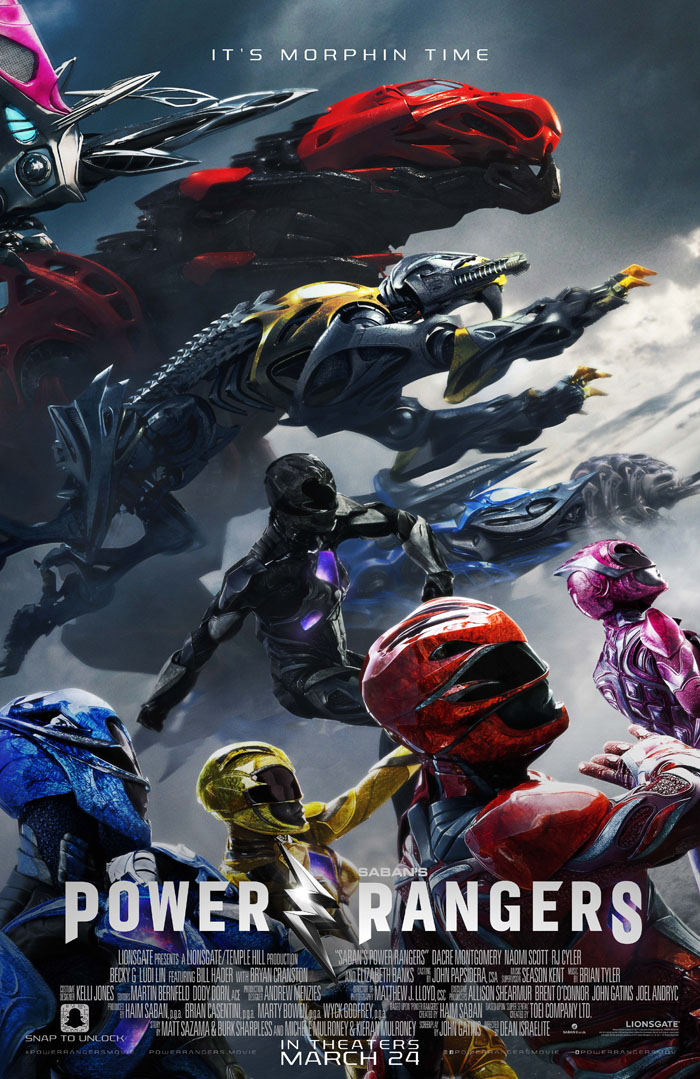 HULLFISH: Can you describe that process? Are you guys both Frame-view people? How do you layout a scene, or how do you have your assistants layout a scene for you?
HULLFISH: Can you describe that process? Are you guys both Frame-view people? How do you layout a scene, or how do you have your assistants layout a scene for you?
BERNFELD: We both used frame view laid out from the wider takes to the closer takes, so it doesn’t always go in letter order. The bin gets organized as the scene should be cut: from wide to close.
HULLFISH: As a matter of fact, that’s how I do it. Not necessarily in set-up letter order…
BERNFELD: No, we didn’t use letter order because, in the end, the letters don’t really mean anything. It’s what’s on-screen that matters. That’s why it’s a good way to do it, I think. Obviously, we could use Text view for descriptions, so you could easily click back and forth between the two views. Some scenes were so huge that it would be nice to go to Text view.
HULLFISH: Dody, do you find that laying out the bin in that particular visual way helps you approach the scene? When you’re cutting you can think, “This is what I want – a specific shot size and angle – and then you can see it easier? What’s your approach to the scene when you’ve got the bins laid out like that?
DORN: I used Frame view more on this film than I usually do. I am a Text view person because I write my own descriptions and I also create a sort column for myself. Sometimes I make sub-bins because I don’t like to have a bin where I can’t see everything without scrolling. I’d rather make my list, notes, and put my locators in when I’m viewing dailies and start cutting from that. Also, because there was a lot of moving camera, a single still frame doesn’t represent what the shot really includes. I find all of the pieces that I want, I put them together in a rough order, and then I start shaping the scene. It’s a little bit more like Moviola-style on an Avid because I’m finding all of the pieces that I want before I start cutting.
HULLFISH: Right, putting together a KEM roll in other words?
DORN: It could be sort of like a KEM select roll, yes.
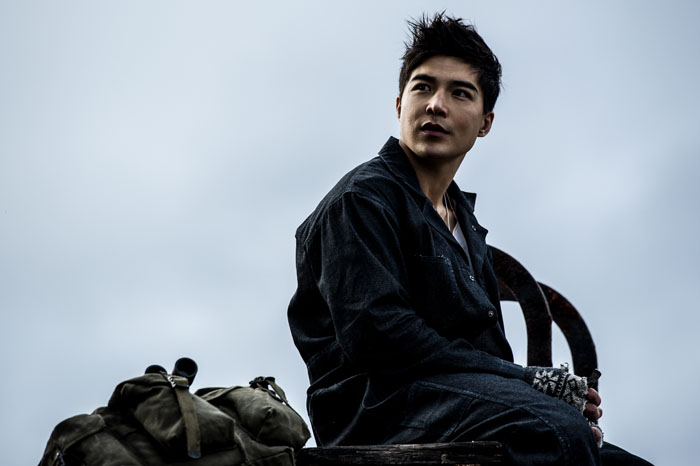
HULLFISH: Are you making a selects roll? Or are you actually jumping straight into a timeline that then you start to shape?
DORN: I do it a couple of different ways. I start with an assembled roll of all the dailies created by the assistant in the dailies bin. I have quick keys setup to jump to the next locator, which is the beginning of the next take. That way, I don’t have to sort through all the junk. I press play and drop locators while I’m watching. Sometimes I just copy the whole marked up daily roll, and start cutting out what I didn’t mark so that I’m creating a select roll and from there I’m shaping.
HULLFISH: Are you shaping by actually editing in that selects timeline, or using the selects reel as a source?
DORN: I’m shaping while working in that timeline. Obviously, I go back and I’ll find other things that I liked. If you open up a bin now that has my first cuts in it, you’ll go “What is this cut that’s 47 minutes long?” Well, it started out as a 3-hour daily roll that I beat down to 47 minutes and then the next version will be 20 minutes, and the next version will be 3 minutes. I just keep whittling away at it.
HULLFISH: Martin, what’s your approach?
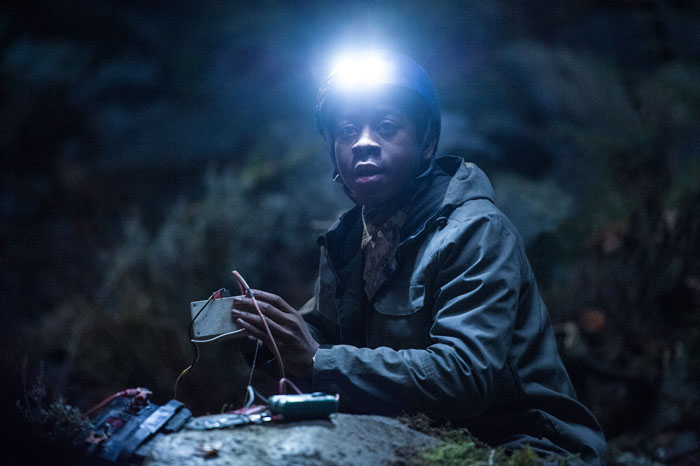
BERNFELD: I sort of do it the same way. I start with my KEM roll where it has absolutely everything. I create a new sequence and then I just sit back and watch. Then, I cut in all of the stuff that I like into an empty sequence. That way, I’m creating my selects roll. From that selects roll, I reorganize it to how the scene is cut. Sometimes I have the same line reading three to five times, or however many different variations I liked and then I duplicate that. Then, I whittle it down again from that and I just keep working that way. I always have my selects and I always have my full KEM roll accessible.
HULLFISH: Do you find that doing that way with a whittled down selects reel where you’ve got multiple versions, does that help you when you work with the director on the director’s reel and you’re making the changes to your original cut?
BERNFELD: I think so. I remember all those things. And then I can show the director my selects. We also have ScriptSync set-up, so we can always go in and quickly review all the line readings of every single performance, so if he does want to see something else, we’ll go that way. Otherwise, I’ll usually play my 5 selects I have and we’ll go from there.
HULLFISH: Do you discount the use of ScriptSync as a starting point? Do you only use it with the director?
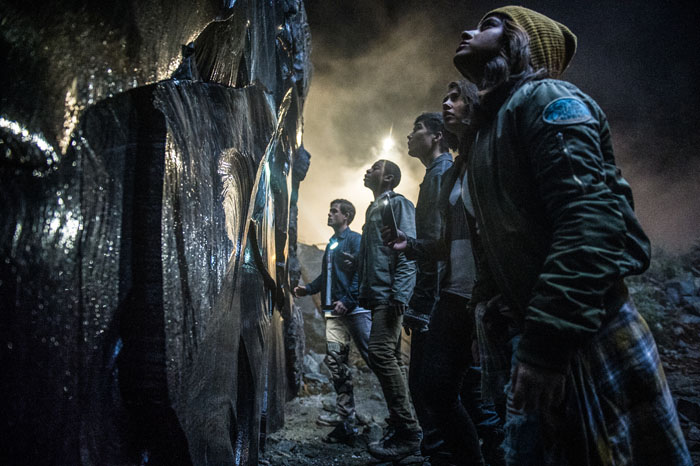
DORN: I don’t use ScriptSync when I am doing my first cut. It’s such a fragmented way to view the material. When I’m watching dailies, I’m seeing the internal rhythm to the performance in whole takes. Even if I choose ultimately to break up that rhythm by jumping from one take to another, shortening or extending pauses, as a scene comes together, I like to feel the internal rhythm that the actors had. Martin has used ScriptSync more than me – this is the first time I’ve used it and I did really learn to value it – especially when doing re-cuts or alt versions with the director. What I’ve done in the past when the director wants to review alt takes of a given line, my assistant builds a roll of every reading, I sit back and let that play so I can have a relaxed viewing experience. When I’m operating the Avid, it can function like a block from experiencing the moment in a pure way. So, ScriptSync depends a lot on how it’s been laid out. Even if you play all the line readings in a row, it’s still got stuff around it and operating the Avid can get in the way. I never had the need or desire to use it when making my first cut.
HULLFISH: You did find it useful when you were doing director’s cuts and alternative versions?
DORN: Definitely.
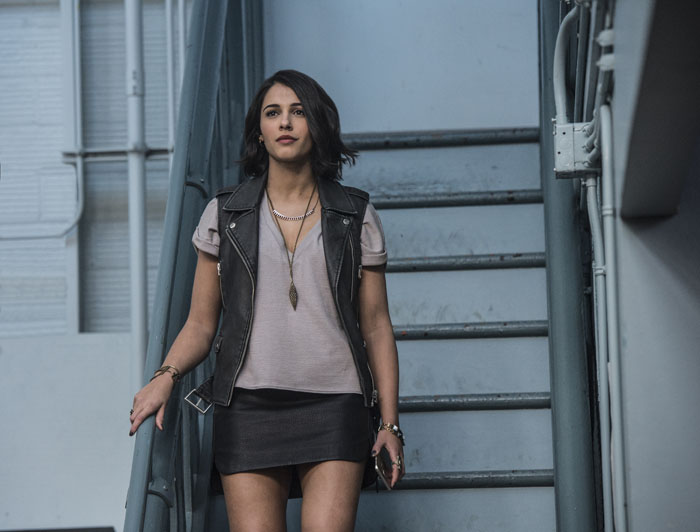
HULLFISH: Let’s talk a bit about performance and finding those performances. You got a bunch of young actors and also I would think this movie had the chance to go a bunch of different directions as far as how kind of crazy and over-the-top it got or how understated and held-back it is. Was there a lot of bracketing of performances or did you find that you needed to shape performances?
DORN: Dean was very clear with us about what he wanted and it was definitely naturalistic and dialed down. It’s a new, re-imagining of Power Rangers, not your Power Rangers from the 90s. With that in mind, we knew where to go with the performance choices. Naomi Scott is very experienced in what she did and her material was straight forward to deal with. RJ Cyler gave us a bounty of fun performances to choose from. I think that Dean and Dacre Montgomery spent a lot of time discovering who Dacre’s character was because he was the lead, the Red Ranger. That was where we searched performances most for what the final arc of the character was going to be. In particular, we had two specific beats where the Red Ranger revealed his vulnerability. In the end, we had to take one of those beats out to give proper weight to the most important beat of vulnerability, –SPOILER ALERT– which was when Billy died and came back to life.
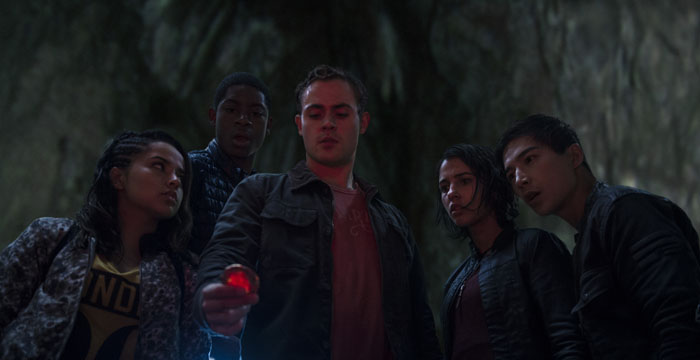
HULLFISH: You talked a bit about how the director explained to you what he wanted and his ideas. Martin, can you remember how those discussions went? Did they happen early, during dailies, during your interview? What was your interaction with the director before and during the shoot?
BERNFELD: We talked every day. He would call in and ask how the dailies looked. We would have quick conversations on set about what he was looking for. He was very clear from the beginning and kept the conversation going throughout the whole process. But from the get-go, even from the early conversations, he was clear he wanted naturalistic performances. It’s just more of the nuances that we were discussing on a day-to-day basis. We were always looking out for those types of performances. The beauty of having two editors is that we could always show each other cuts and have a conversation about it.
HULLFISH: Did you guys ever watch the dailies together?
BERNFELD: No. We’d separate dailies out. So when the dailies would come in, whoever had time would start watching. But sometimes, even though Dody was cutting a scene, I would watch the dailies for that scene just to catch up.
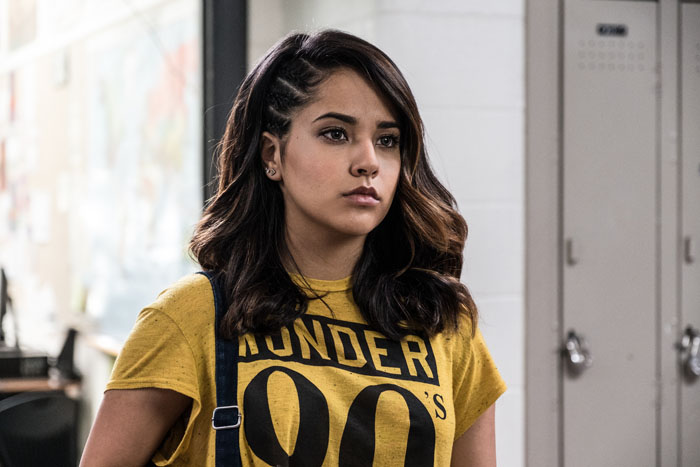
HULLFISH: Did the structure of the movie change much from the script? And what were those discussions where it did change from the script?
DORN: There were not too many structural changes. We did some elimination, because it’s still an origins story, trying to figure out how much character development to have: “this minute there should be an action scene or by this minute there should be this or that” and we weren’t really following that model, but in the back of your mind whether you’re following it or not, you have to keep things pumping to some degree. We had a lot of backstory and character development and a certain amount of it was stripped away. That happened at different points throughout the process. Also, the choice to keep the point of view on the Red Ranger was a lot of what guided those decisions — taking out some of the backstory of the other Rangers.
HULLFISH: Was it more to do with the overall length of the film or was it more to do with the macro-pacing from scene to scene of the story?
DORN: It was absolutely a combination. The other big thing structurally was moving around where the villain is introduced: the former Green Ranger, Rita Repulsa.
HULLFISH: Can you reveal why that was done?
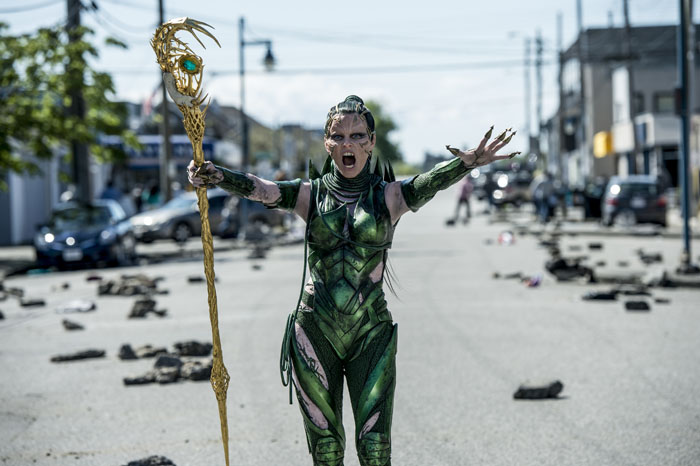
BERNFELD: We changed the order to keep the danger present. But we also delayed Rita Repulsa a bit because our characters were so engaging and we loved spending time with them. Once we introduced the villain, it created a natural engine for the movie and once the threat was introduced, you want to keep that engine going. Even though the character scenes were very engaging by themselves, they slowed things down a bit after Rita came on the scene. Once we found the natural flow of knowing our Rangers in their daily life, then the danger could be introduced and keep building and building towards the end of the movie.
HULLFISH: How did they put you two together? Did they feel like one person had one strength or one person had another? I’m interested in why two editors?
DORN: In my interview with Dean, he talked about the naturalism and wanting to tell an emotional story, which really struck a chord for me. We talked about it at length via a Skype interview. He told me there would be another editor. I was excited to learn it was Martin because he and his wife are friends of mine. Martin and Dean had worked together before on Project Almanac and they have a great relationship. Martin was very active in a lot of the discussions that Dean had as the project was coming together. I loved the script and the feeling of the characters, their emotional connection and growth.
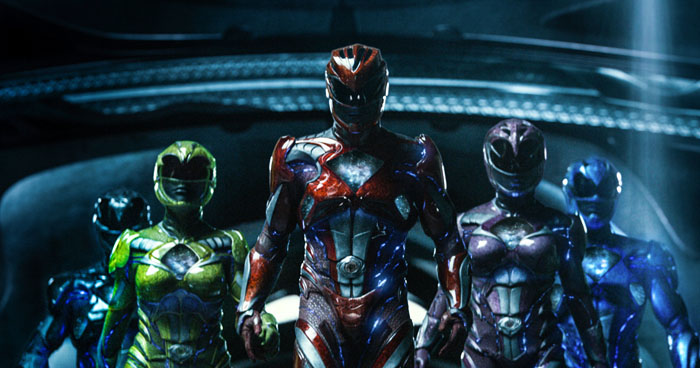 HULLFISH: Neither one of you are “action hero” kind of editors. Both of you have done more personal movies. So that’s kind of interesting. Do you feel that was his desire? Like “I got this superhero thing covered, so let’s make sure we got two editors that understand human nature?
HULLFISH: Neither one of you are “action hero” kind of editors. Both of you have done more personal movies. So that’s kind of interesting. Do you feel that was his desire? Like “I got this superhero thing covered, so let’s make sure we got two editors that understand human nature?
BERNFELD: Yeah. Absolutely. Dean feels that every movie needs to be as character-driven as possible even in the big action scenes. He felt it was important that he didn’t just have editors who were focused on action and making the story move forward but were also bringing out the emotion. I would say it was a challenge to balance the superhero aspect with all the character development and the emotional through-line. I think we’ve achieved a very emotional movie, despite the superhero aspect of it.
DORN: Also, we knew that our schedule was quite short. Especially in light of the amount of visual effects that had to be done and we were inventing a lot of things in the editing room that weren’t decided before hand. So, in the beginning, often we were cutting without knowing exactly what was going to be in the frame. We had to build it as we went.
HULLFISH: Talk to me about working with so many visual effects? Was it a challenge? Did you have a lot of pre-vis?
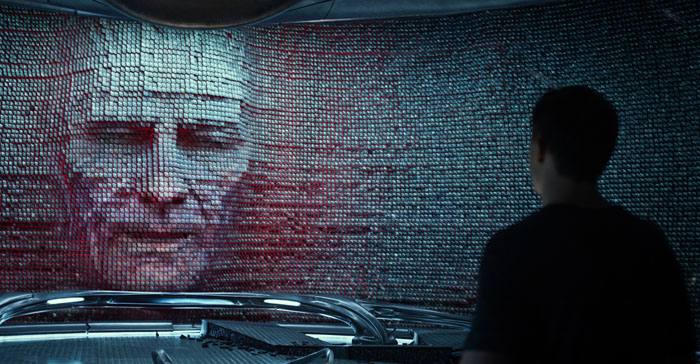 BERNFELD: They did a good amount of pre-vis prior to shooting. The Visual Effects Supervisor and the director had an extensive conversation about how the sequence should go, so we had a good guideline. Despite those guidelines, you also need to imagine a lot. When they were shooting the 3rd Act, they shot empty streets and people reacting to absolutely nothing, therefore you have to imagine the story without having anything in the frame. We assembled the 3rd act with empty streets, then we had early 2-D renderings of the Zords we could move around in the scene. With quick temp animation, we could place the T-Rex and show the direction he was running and sort of build the story that way. We kept a small picture in picture of the pre-vis in the frame of the chosen plate as much as possible.
BERNFELD: They did a good amount of pre-vis prior to shooting. The Visual Effects Supervisor and the director had an extensive conversation about how the sequence should go, so we had a good guideline. Despite those guidelines, you also need to imagine a lot. When they were shooting the 3rd Act, they shot empty streets and people reacting to absolutely nothing, therefore you have to imagine the story without having anything in the frame. We assembled the 3rd act with empty streets, then we had early 2-D renderings of the Zords we could move around in the scene. With quick temp animation, we could place the T-Rex and show the direction he was running and sort of build the story that way. We kept a small picture in picture of the pre-vis in the frame of the chosen plate as much as possible.
HULLFISH: Dody did you find yourself relying on sound effects to provide the sense of life to some of those scenes or did the assistants do a lot of the Sound Effects? What’s your take on the use of Sound Effects and Sound Design?
DORN: We started working in the very beginning in 5.1 and we each had a projector in our room so that we were watching everything in a large format. And we had our sound designer, Joe Dzuban on from the fifth week of the director’s cut. We were working with his material as much as possible and out of our own libraries, trying to bring as much of it to life with sound effects as we could from the very beginning. We also did what a lot of people do: recorded temp dialogue in editorial. Dean or the assistants would do added or alt lines for the CG characters and we were putting those in throughout the entire process.
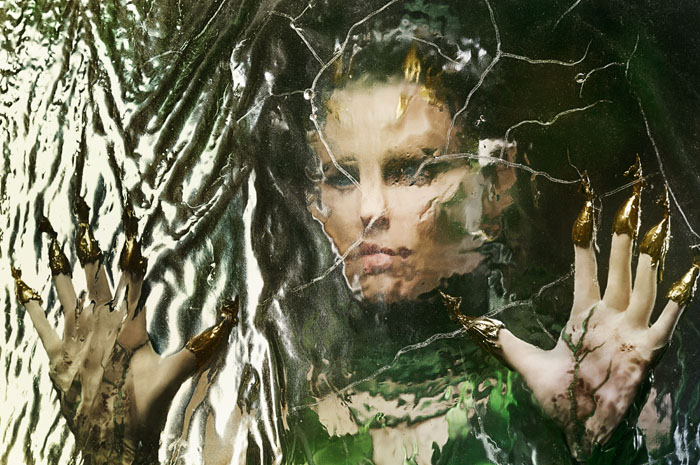 HULLFISH: So your two edit suites were 5.1 surround? And were you personally positioning stuff in Avid in the 5.1 surround field or only the sound designer was placing stuff in surround?
HULLFISH: So your two edit suites were 5.1 surround? And were you personally positioning stuff in Avid in the 5.1 surround field or only the sound designer was placing stuff in surround?
DORN: When we were in Vancouver, we were placing it. Once we were back in L.A., Joe would place it.
HULLFISH: Did you find that having a projector affected your sense of pacing compared to viewing in the Timeline viewer on your computer screen?
BERNFELD: I think it does. The ability to walk away from the Avid and watch it as a movie in a large format helped tremendously in terms of pacing. You can feel sometimes things were too fast, because you absorbed the image quicker when watching your small monitor compared to the bigger screen. On Project Almanac we didn’t have a projector so we would rent out a screening room in order to watch the movie on a big screen. So it was a luxury to have this ability at all times.
HULLFISH: You guys both like standing to edit?
DORN: I started standing in 2011 on End of Watch and I’ve been doing it ever since. There have been some movies where I stood the entire time. On this film, my desk could go up and down and I have an adjustable Aeron chair, so I can sit or stand. Movement seems to be the most important thing. Whether it’s sitting or standing, you shouldn’t do one or the other only. You just need to move.
HULLFISH: How big is the projection screen?
BERNFELD: The screen was approx. 100-inch.
HULLFISH: Dody you could speak to your sense of story and how it plays out and how your edits can affect story.
DORN: Interesting question. Funny thing about editing is you’re working with the existing material and trying to bring the most out of it. Sometimes it’s achieved by being reductive, like leaving the audience hanging in an unresolved moment to help propel them to the next moment. Scenes have a beginning, middle, and an end, and it’s tricky to know how much or little to play out and still hope to leave people wanting more so that they’re yearning to go to the next beat in the story. And the actors are playing out the whole scene as it’s written, they’re not portraying this suspended state, so you have to adjust and make it feel natural that you’ve suspended the moment.
HULLFISH: Martin, do you see a story telling methodology or similarity in the previous project that you worked on with Dean?
BERNFELD: You can tell that Dean has directed this movie if you’ve watched Project Almanac. He has a distinct voice and aesthetic: the drama of it all, character-driven and character-based. He’s focused on point of view of characters. It’s written for a certain point of view that he’d like to stay true to, which means staying on the character, even though there are five characters in the scene, you are still very strongly focused on whichever character he wants as the centerpiece of that scene.
HULLFISH: There’s a real desire of many directors for a sense of trust with their editor. You look at Martin Scorsese and Thelma, you know. You want that comfort level, that trust, and you develop a second language with them. How much of that do you think you were able to develop on the previous project that led on to this one?
BERNFELD: Quite a bit. Dean and I went to the American Film Institute together, we did our first project, our thesis film, and Project Almanac together and we’ve been working throughout the years on smaller projects as well. I think trust comes into play when you instinctively know what he’d like. It’s not really a tangible thing, it’s more like your instincts are lining up with whatever you both like. I think that’s why you end up being a good match because you both have the same instincts. On this project, we were all in sync.
DORN: Dean was very inclusive in terms of wanting our feedback. I would be working on something with him and he’d bring Martin into look at it. They’d be working on something and they’d bring me to look at it and we looked at the reels together.
HULLFISH: Many editors work different ways when they’re working in groups. Dan Hanley and Mike Hill each picked one or two of the big set piece scenes and then broke up the other ones as to who was “on deck” when the dailies came in.
DORN: That’s kind of how we did it. But we didn’t decide it in advance. Regarding set pieces, you can have too many set pieces in a movie. Sometimes you have to diminish things to give the right space for the important set pieces. Otherwise, it can become rhythmically or emotionally confusing as to how much attention you’re supposed to be paying to something.
HULLFISH: And what do you do to those set pieces that you throw away? Do you montage them? Or you just trim them down or completely eliminate them?
DORN: It’s a combination of all three of those.
HULLFISH: Anything you learned during this edit?
BERNFELD: You learn on every movie, you always keep learning. The 5.1 I have never done before, and it was an extra challenge, which turned out to be very fruitful because studios like to feel the movie like it’s supposed to be.
DORN: If you don’t have enough fully fleshed out sound, a scene can get cut too tight. Then, when you start to get the sound in, you don’t have enough room for it. The sound needs room, just like dialog and music need room and there’s a rhythm to all these things.
HULLFISH: I think beginning editors don’t realize that the rhythm of the scene is not purely in the visuals.
DORN: Right. On other films, there were times when I cut the dialog first and got the rhythm of the scene right and then I adjusted the picture to that. The dialog was providing the music or the rhythm of the scene in that case, especially if there was a lot of improv.
HULLFISH: Was there a lot of improving on this movie?
DORN: No, not much, but Billy’s character delivered some fun improvs.
HULLFISH: Could you guys comment on the editing of any of these scenes?
DORN: This scene was really cut by both Martin and me. I did the first cut of the plates for the Mastodon Joy ride and the live action kids for the busting through the wall inside the cave. Then Martin fleshed it out with the cockpit material that was shot at the end of the shoot. And there was a much longer beat with the Nuns. He worked with the VFX supervisor to design the action of the Mastodon, careening up the side of the mountain, flying over the hill and the rough landing leading down to the Nuns. The plates for the first section before the Mastodon interacts with the Nuns were a little shapeless, even though there was a highly developed pre-vis for the scene. It all came together when we decided to end the scene right after the Mastodon passes behind the van, again leaving you hanging as to what is really going to happen to Zack out there in the Zord. We also rearranged the little beat of Alpha 5 walking forward saying “Where’s Zack?” In the script, that is what lead to Zack busting out of the mountain outside. But it just felt better to go off Zack’s longing look at the Zord to him busting out. Saving the “Where’s Zack?” to connect to him busting through into the cave was efficient and fun.
DORN: This is Martin’s scene through and through, including the sound design and the music. Martin used the EXPLOSIONS IN THE SKY cue for his first cut as temp, and then we ended up licensing it for the final. My contribution was to suggest rotating the shot of the hand through the water so it was really clear that it was a ceiling of water.
BERNFELD: I edited the outside of the ship and Dody edited the inside of the ship. Both scenes were cut down quite a bit from what was scripted and shot. I worked on the sound design for both sections, and those ideas were carried through to the final mix, and which informed the rhythm of the scenes. We worked a lot on what the ship was going to sound like to make it a real character. We went back and forth between a quieter environment and a louder one. We landed back at a quieter space but that was punctuated with specific eerie sounds that felt like the ship was creaky and old but still somehow haunted with an alien life to it.
BERNFELD: Trini and her family, again, was a much longer scene as scripted. We boiled it down to the essentials, just enough to give you an idea of how dysfunctional her home life must be but still keeping the fun moments with her Mom and brothers.
DORN: Not sure what to say about this scene. It’s interesting to me that you cut off the head and the tail of the scene for this clip. We had the head cut off in the movie at one point. But we decided to put it back to give the sense that this is a place where the kids from the town come, like a lovers lane. We were trying to not make it such a coincidence that the 5 Rangers all ended up at the mine on this one fateful night. There was also a beat created adding an off camera line where Kimberly asks Jason why he doesn’t run away. In the scene as written, she indicates she is thinking about running away and adding that maybe he would run away too would function like a connection between them and also identify them as kids who were outcasts.
HULLFISH: Thank you both for your time.
DORN: It’s always fun to think about why you did what you did and have to articulate it since so much of the work is done intuitively.
BERNFELD: Thanks for the opportunity to explore and share that!
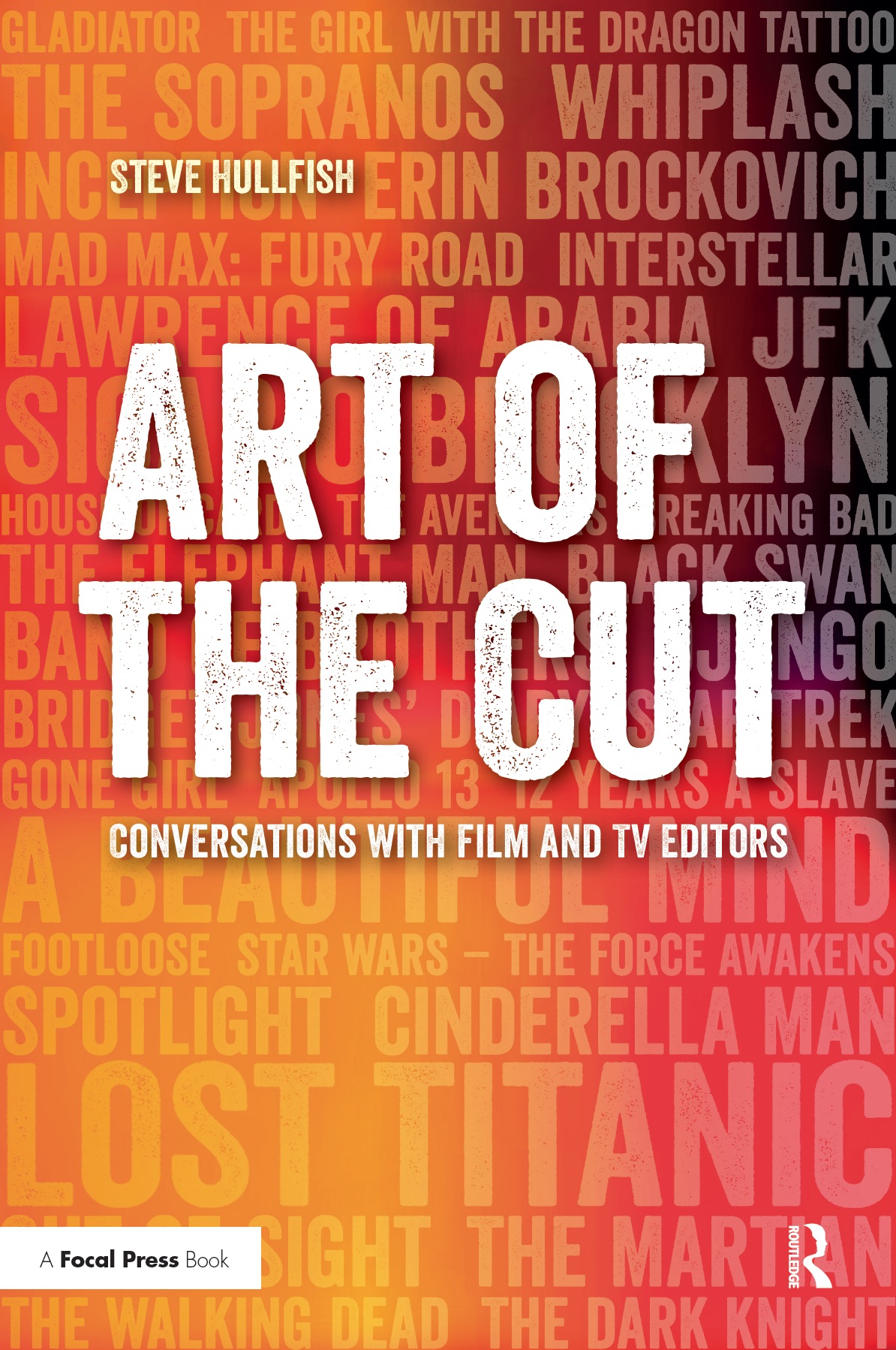 To read more interviews in the Art of the Cut series, check out THIS LINK and follow me on Twitter @stevehullfish
To read more interviews in the Art of the Cut series, check out THIS LINK and follow me on Twitter @stevehullfish
The first 50 Art of the Cut interviews have been curated into a book, “Art of the Cut: Conversations with Film and TV editors.” The book is not merely a collection of interviews, but was edited into topics that read like a massive, virtual roundtable discussion of some of the most important topics to editors everywhere: storytelling, pacing, rhythm, collaboration with directors, approach to a scene and more.
My thanks to Moviola’s Ramin Taheri and Abraham Contreras for transcribing this interview.

Filmtools
Filmmakers go-to destination for pre-production, production & post production equipment!
Shop Now